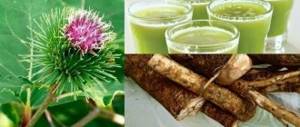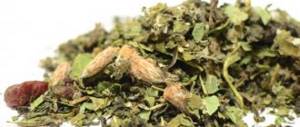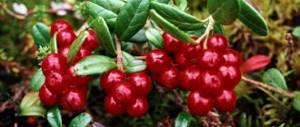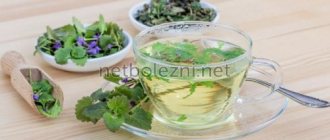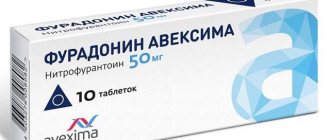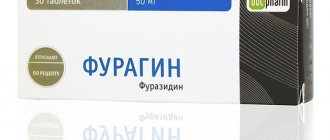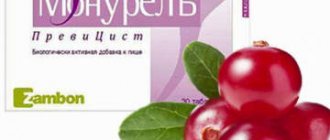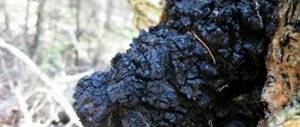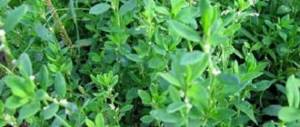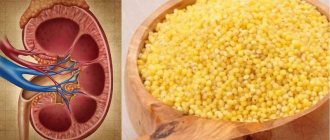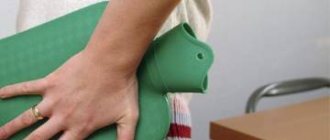No-spa for kidney disease
The familiar yellow tablets with a biconvex surface are available in blisters or in a bottle with a dispenser.
The drug is also commercially available in ampoules of 40 mg/2 ml for intramuscular and intravenous administration. The composition is as follows:
- Drotaverine hydrochloride (active substance)
- Magnesium stearate, povidone, corn starch (auxiliary components of tablets)
https://www.youtube.com/watch?v=CWwfR_3sa_s
No-spa is a myotropic antispasmodic that reduces the tone of smooth muscles, thereby relieving pain and spasms in the internal organs. The effectiveness of the medicine for kidney disease is very high - the painful sensations lose their intensity in just a couple of minutes. No-spa also helps with pathologies of the genitourinary system - cystitis, urethritis.
Classification of antispasmodic drugs
All drugs whose action is aimed at relieving spasms are classified according to the mechanism of action on the human body. The following are distinguished:
- Myotropic drugs. Directly affect the structure of the smooth muscles of the body, changing all the biochemical processes occurring in them. Such antispasmodics are produced on the basis of drotaverine hydrochloride. This group of drugs includes No-shpu, Mebeverine, Drotaverine, Otilonium bromide, Bendazole, Papaverine, Bencyclane, Gimecromon, etc.
- Neurotropic drugs. Here the medicine acts on impulses in the nerve endings that stimulate the smooth muscles of the organ oppressed by pain. These drugs are based on M-anticholinergic drugs. This group of antispasmodics includes Bucospan, Arpenal, Metocinium, Aprofen, Difacil, Ganglefen, etc.
In addition, all antispasmodic drugs can be classified by type of origin. There are artificial remedies and natural antispasmodics. The latter include belladonna, chamomile, marsh calamus, lily of the valley, tansy, mint, oregano, etc.
In addition, all drugs with antispasmodic action are distinguished by form. There are these:
- Tablets and dragees;
- Rectal suppositories;
- Tinctures;
- Granules for preparing a suspension or solution;
- Injection ampoules.
Operating principle
No-spa, or rather its active component, is similar in chemical structure to other antispasmodics, but in comparison with many it exhibits a prolonged and stronger effect. The effect of the drug on the kidneys is due to the fact that drotaverine inhibits a special enzyme - phosphodiesterase 4. A decrease in the activity of this enzyme causes a temporary disruption in the flow of calcium into the tissues.
Typically, the drug is prescribed for acute or moderate pain in the kidney area as a symptomatic (pain reliever), and its effectiveness is manifested in case of spasms of any origin (muscular, nervous). However, there are also therapeutic results for pain in the kidneys from taking No-shpa.
A course of treatment helps to slightly reduce the contractility of smooth muscles and improve blood circulation in organs.
No-spa does not have a negative effect on the heart and blood vessels, so it can be used even in patients with cardiac pathologies (with the exception of severe forms of heart failure). The medicine is prescribed to children from one year of age and to adults for various nephrological pathologies accompanied by spastic conditions.
List of drugs that can eliminate kidney pain
To relieve kidney pain, you need to use a wide range of medications, which include NSAIDs, analgesics, and antispasmodics. If the disease has reached an acute stage of development, injections are prescribed, and treatment with tablets is continued to stabilize the condition. For example, renal colic is caused by a stone in the ureter. In this case, you need to take a Nurofen tablet or give a Diclofenac injection. You should not drink Aspirin, as it is dangerous. The drug can cause bleeding, and Naproxen is prohibited for patients with kidney problems.
Return to contents
Antispasmodics
The mechanism of action of the group is based on the elimination of muscle spasm of organs or blood vessels. They help relax the smooth muscles of the ureter. As a result, the lumen of the urinary ducts expands, which quickly calms the unpleasant symptom. Antispasmodics are used to treat acute and chronic forms of kidney disease, for example, pyelonephritis or urolithiasis.
Return to contents
Myotropic antispasmodics
Antispasmodic drugs are divided into groups, one of them is myotropic. They lead to changes in the ion balance at the cellular level. As a result, kidney pain goes away faster. They also have a vasodilating effect. Prominent representatives of myotropic tablets are “Drotaverine” and “No-shpa”, which are considered analogues of each other.
Return to contents
"Drotaverine" as a reliable pain reliever
First aid for kidney pain. The tablets got their name because of the main healing component, which not only relieves muscle spasms, but also nourishes tissues with oxygen. The difference is that after taking it, side effects rarely develop, and therefore the tablets are safe for children over 2 years of age and pregnant women. Recommended dosage - 2 tablets. up to 3 times a day.
Return to contents
"No-shpa" based on drotaverine
The most popular and effective medicine for kidney pain, which has a relaxing effect on the smooth muscles of the organ. Doctors usually prescribe No-shpu as part of complex therapy for pyelonephritis, pyelitis, cystitis and nephrolithiasis. Release form: tablets and solution for injection. The drug should be injected in the most extreme cases: acute illness, childbirth.
Return to contents
Combination drugs
The term “combined drug” refers to a drug that has a dual effect on the body. For example, it will simultaneously help reduce pain in the kidney area, inflammation and normalize body temperature. These qualities have made the group of drugs widely used in practice, despite the large number of contraindications and side effects. Good kidney tablets with combined properties:
Return to contents
"Spazmalgon" comes to the rescue
The characteristic features of the drug are its anti-inflammatory and antiseptic qualities, it has the ability to relieve severe pain. This makes Spazmalgon effective not only against diseases of the urinary system, but also the genital area and gastrointestinal tract. The dosage does not differ from the prescriptions of No-shpa, and if necessary, they can be drunk or injected even into children.
Return to contents
"Baralgin" for sick kidneys
A combined analgesic and anti-inflammatory drug that also shows positive results in the treatment of kidney diseases. In addition, Baralgin can lower the temperature. Do not use during pregnancy, breastfeeding or allergy to one of the components. It is not advisable to treat children with this remedy.
Return to contents
“Spazmonet”, why not?
Doctors prescribe these tablets for constant pain, since Spasmonet has a prolonged effect. Reception during pregnancy and breastfeeding is carried out only under the supervision of a doctor. Children can also take the medicine; the dosage and frequency of administration are regulated by the pediatrician. Limit - up to 6 tablets per day. "Spasmonet" is also used for prevention.
Return to contents
Analgesics and antipyretics
Analgesics are drugs with a strong antispasmodic effect, whose mechanism of action is based on the effect on the central nervous system, which is why they are so effective for heart attacks, in the postoperative condition and in the treatment of the urinary system. This includes medications of natural, synthetic and semi-synthetic origin. Prescribed for severe pain. Antipyretics are herbal medicines whose action is based on thermoregulation. This causes a decrease in temperature, and antipyretics act until the body temperature becomes normal.
The disadvantage of analgesics is that the body becomes accustomed to the medicinal substance during long-term use.
Return to contents
"Analgin", "Nurofen" and other effective analgesics
Return to contents
Non-steroidal painkillers
For kidney disease, this group fights inflammation, pain and heat to ensure their effectiveness. A widely used NSAID is Diclofenac, which is available in the form of tablets and ointments. The tablets have an antispasmodic and anti-inflammatory effect, the ointment for pain also relieves swelling and redness in the area of the diseased organ. NSAIDs include Ibuprofen, Ketoprofen and Nimesulide.
Use for various diseases
The drug is indicated for diseases of the urinary system, including:
- Acute renal colic;
- ICD (nephrolithiasis);
- Pyelitakh, jade;
- Tenesmus of the bladder;
- Pylorospasm, etc.
For renal colic
Renal colic occurs in different cases - both when a stone moves against the background of urolithiasis, and with inflammatory pathologies of the kidneys. It is a sharp pain in the kidney area (one, rarely two), spreading to the lower back, accompanied by increased pressure, nausea, vomiting (not always). No-spa as a powerful antispasmodic is used when the kidneys hurt due to renal colic to quickly eliminate the spasm and to minimize pain.
Due to the high risk of surgical pathology, it is undesirable to relieve such pain without calling a doctor - taking pills is only a temporary measure until the ambulance arrives. It is acceptable to take Baralgin or No-shpa. Dosage - 80 mg - 2 tablets (maximum single dose). In a hospital setting, a patient with renal colic is usually administered the drug intravenously in a volume of 40-80 mg.
The antispasmodic properties of the drug allow it to be used for acute and chronic forms of urolithiasis, that is, during acute colic due to the passage of sand or stone, as well as for regular aching pain in the lower back due to nephrolithiasis.
The optimal dosage for an adult is 1-2 tablets per dose 2-3 times a day. The maximum daily dose is 240 mg. The duration of treatment usually does not exceed 5 days.
Pyelonephritis can cause acute pain, which can be relieved by taking No-shpa before visiting a doctor. For chronic pyelonephritis, the drug will help eliminate aching symptoms and discomfort in the lumbar region. Dosage – 40 mg per dose for moderate pain, 80 mg for severe pain. It is not recommended to treat yourself with antispasmodics on your own (without a doctor’s prescription) for more than 2 days, but the course can be extended by a doctor along with taking antibacterial drugs.
Ultrasound of the kidneys from July 4 with an unusual text of the conclusion. But later the presence of the stone was confirmed
How to get rid of kidney stones simply and unpretentiously is a thousand-dollar question. I found the answer to this question and am happy to share it with you. Get ready for information that may change your understanding of the treatment of urolithiasis, imposed by kidney doctors, official medicine and pharmaceuticals.
I do not hide from you, dear readers of the site about the treatment of kidney stones
, that I myself suffer from urolithiasis and am constantly looking for a way to stop the kidney stones from growing. The solution to this issue is very difficult, since urolithiasis is virtually untreatable. Only preventive measures can stop the growth of stones.
The use of herbs for the kidneys, a diet for kidney stones, and a certain lifestyle give their results. However, these measures do not guarantee that sand and stones will not appear in our kidneys again.
I adhere to a fairly strict diet with oxalates, follow a drinking regime, and am constantly looking for measures to remove sand from the kidneys, but the next ultrasound of the kidneys again and again shows the presence of stones. Lately, small stones of 2 mm or less have been constantly present in the renal pelvis and I have yet to find a way to get rid of them.
However, now we will talk about larger stones. Do you remember in one of the last publications How to remove kidney stones or new greetings from urologists, I said that I underwent an ultrasound examination of the kidneys and a 5 mm kidney stone was discovered?
The ultrasound was paid and was performed on July 4, 2012. I then questioned the diagnostician’s conclusion, since the wording about the presence of stones was, in my opinion, strange. However, later I became convinced that there really was a stone of similar dimensions.
After that research, I decided to experiment on myself. In fact, these were the usual actions to expel kidney stones, which I described in the article How to expel kidney stones - my experience, with the exception of some actions. Read that article: the principles outlined in it are used as the basis for this experiment.
In order for this publication to look complete and be a kind of guide for action, I will have to repeat myself - I will again fully describe the entire process. I will say right away that I repeated all the actions listed below day after day for several days, until the bitter end. And to get rid of kidney stones, you will have to find a free hour and a half to two hours a day.
I took 2 tablets of no-shpa. I have several bottles of no-shpa tablets at home, which I once bought out of ignorance. No-spa is a good antispasmodic, and I purchased it to treat renal colic, which can occur at any time.
Instead of no-shpa, buy drotaverine. It's the same thing, only much cheaper
No-spa is a fairly expensive drug, but the fact is that no-spa is drotaverine, the price of which is significantly lower. You can verify this by looking at the packaging. For those who do not have this drug on hand, I took a photo, as usual, on my windowsill.
Marketers have promoted the name “no-shpa” and are selling it at exorbitant prices. Drotaverine costs pennies in pharmacies, so why pay more for the name? Next time I will buy drotaverine. I recommend keeping antispasmodics for anyone who has symptoms of kidney stones.
Often the stones begin to move and signs of renal colic may appear. Drugs such as drotaverine come to the rescue. Antispasmodics relax the contracted walls of the ureter, expanding the urinary tract. A stone stuck in the ureter can pass into the bladder and the pain will stop.
Antispasmodics also help in our case, when the size of the stone does not exceed 5-7 mm and it can be driven out through the ureter.
After taking the antispasmodic, I drank 8 glasses of water, which is approximately 1.5 liters. The practice is known and characterized as a water shock to the entire urinary system, especially the kidneys.
Hurricane water passes through the kidneys in large quantities, physically washing away the calyces and pelvis of mucus, sand and stones.
If we usually drink water gradually to prevent illness, trying to distribute the drink evenly throughout the day, here we need a water hammer, a kind of tsunami on a kidney scale.
I cannot help but note that this type of water consumption is not suitable for everyone. First of all, for heart patients this method is not only undesirable, but contraindicated.
Although I am not a doctor, I believe that the problem that occurs when drinking a large amount of water is very large and can lead to not very good consequences.
For any self-medication, I always recommend that you first consult a doctor. After all, these are specially trained people who, by virtue of their position, are required to understand the indications and contraindications for various diseases.
Physically shaking out kidney stones. If I usually used a jump rope, then in this experiment I replaced it with other exercises:
- 50 jumping jacks. Do it while standing, trying to jump as high as possible
- 50 quick heel drops - standing still, pulled yourself up on your toes, and then very sharply dropped onto your heels.
The kidneys have a complex structure. To get rid of stones, you need to try to pull them out and direct them in the right direction.
As I described earlier, after taking the antispasmodic and water, I headed to the hot bath. I recommend setting the temperature so that it is comfortable to be in the bath for 40-60 minutes. I make the water warm and then add hot water while I'm in the bath.
Again, I should note that a hot bath may be contraindicated for some medical conditions.
Repeat jumping in place and lowering on your heels again the same number of times as in step three.
Antispasmodics relax the muscle tissue of the ureters. A hot bath dilates the urinary tract, allowing free passage. Water in large quantities sweeps away stones and sand from the kidneys. Jumping and falling on your heels causes the entire body to shake, including kidney stones.
In the end, the stones are forced, under the influence of these factors, to go to the ureter, and from there to the bladder, from which they exit through the urethra.
Why did all this need to be repeated, you ask, since everything was already described in that article?
The fact is that over the past week, this is exactly how I got rid of a 5 mm stone in my left kidney. Personal experience is an invaluable experience that no theory can replace. On the 5th day of using this method, this stone came out, and Cloaca, the goddess of sewage and sewage, happily accepted it.
You can catch stones that come out with urine using this strainer.
It belongs there, I won’t regret this stone. The only thing I regret is that I didn’t think through how to catch him and then present him to you, dear friends. We are all good with hindsight, and only now it dawned on me that you can catch a stone easily and naturally.
Now I have come up with the idea that you can catch a pebble that has jumped out with urine using such a simple device as an ordinary Chinese strainer. Preferably with a handle that will be very convenient so as not to get wet.
The stone jumped out, scratching the urethral mucosa with its sharp edges. I didn’t catch him, but I managed to see him while he was drowning. It looks grayish, with very uneven edges, and is really about 4-5 mm in diameter. Unfortunately, the ultrasound on July 4 was not mistaken - there really was a stone.
Although the stone is gone, there are still small stones up to 2 mm that still need to be worked with. Apparently, due to their small size, they do not tend down to the ureter. We need to come up with something special for them, so there is still a lot of work ahead. I will immediately report all the results to you, dear readers of the site.
In addition to stones, an ultrasound on July 4 also showed pyelonephritis. It was because of this that I was in no hurry to have a repeat ultrasound, even though the stone had passed. According to the schedule from June 20 to July 20, I was halfway through taking the herb, so I decided to continue taking it as planned, and go for the study two weeks after the first.
Kidney ultrasound on July 16 confirmed the absence of large stones and pyelonephritis, but sand remained
Kidneys hurt - how to treat pain and swelling medications
Pain in the kidneys can be aching and spasmodic, even weak ones poison life and take away strength. How the kidneys hurt, how to treat it, medications will help or harm. These are some of the questions people ask when they have lower back pain. It is important to know that self-medication can result in serious complications. The medicine should be prescribed by a doctor depending on the cause of the pain.
How to determine the cause of lower back pain
Before taking pills for kidney pain, you need to make sure that they are the cause of the discomfort. Pain in the lumbar region occurs with radiculitis, pathology of the pancreas and gallbladder. Symptoms of kidney disease are:
- the pain is localized above the lower back under the lower ribs;
- it does not become easier when changing body position;
- if you lightly slap yourself on the lower back, the pain radiates in waves in all directions;
- having problems urinating;
- urine is cloudy with sediment or bloody inclusions;
- temperature rises;
- weakness and fatigue;
- swelling of the legs;
- high blood pressure.
In kidney disease, pain has a certain character
Most of the symptoms listed appear in diseases of other organs. For example, prostate problems in men. You need to be sure of the diagnosis before taking painkillers for kidney pain.
What medications are used for kidney pain?
Kidney pain can occur due to inflammation, passage of sand and stones, viral infection and other reasons. What you need to drink when your kidneys hurt is determined by the presence of the pathology that is the cause of the pain syndrome. For kidney pain, drugs from different groups are used:
- antispasmodics;
- diuretics for severe edema;
- analgesics to relieve severe pain;
- antibiotics if the cause of pain is a viral infection or inflammation.
Antispasmodics are effective in cases where a stone blocks the duct. As a result, it reduces the removal of fluid from the kidney; the sharp edges of the stone scratch the mucous membrane of the walls of the urinary tract. Stones are characterized by acute pain that occurs suddenly on one side and gradually intensifies as urine accumulates in the pelvis.
Antispasmodics relax smooth muscles, dilate the ducts and allow stones and sand to freely exit the kidney. The most well-known antispasmodics are sold without a prescription:
- No-shpa;
- Drotaverine;
- Platifilin;
- Papaverine.
Despite the free sale, it is impossible to abuse the drug, which helps with kidney pain. You need to see a urologist, undergo an examination and get prescribed medications.
A large stone can completely block the passage. Renal colic will occur and antispasmodics will be powerless to solve the problem. Without being released, uric acid and other substances that should be excreted along with urine will penetrate the tissues and intoxication of the body will begin.
Diuretics relieve pain with severe swelling and weak urination. They remove fluid from tissues and help accelerate its filtration by the kidneys. In case of aching, gradually increasing pain with a reduction in the amount of urine excreted, you can take the following for relief:
- Furosemide;
- Britomar;
- Aldactone;
- Diuver;
- Hypothiazide.
Furosemide in ampoules
Diuretics are also prescribed together with others for kidney disease to relieve swelling. In case of chronic renal failure, you should regularly eat natural diuretics:
- strawberry;
- watermelon;
- celery;
- beet;
- apples.
Food will fill you up, gently remove water, without reducing the level of calcium and minerals. Tasty and healthy for other organs.
What helps with kidney pain, what pills you can buy. Analgesics act on nerve endings, blocking their sensitivity. They relieve pain, but the condition of the kidneys worsens even more.
Medicines are also filtered through the diseased organ, increasing the load. Painkillers are taken in extreme cases to relieve very severe pain. To increase their effectiveness, they have an additional anti-inflammatory effect.
A group of non-steroidal drugs partially eliminates inflammation. Analgesics include:
- Pentalgin;
- Indomethacin;
- Panadol;
- Askofen;
- Analgin;
- Aspirin;
- Tempalgin;
- Citramon;
- Nurofen.
Analgesics will help alleviate the patient's condition
All of the drugs listed are sold freely. It must be taken into account that they have side effects and use them carefully.
For kidney pain, antibiotic tablets are prescribed by a doctor if the kidney disease is caused by a viral infection. You cannot take pills on your own. Viruses and microbes react differently to drugs.
You can waste time taking medicine that is not effective for this type of disease. The peculiarity of viral infections is the ability of microorganisms to get used to different substances. Antibiotics must be changed periodically.
The urologist will make a list of necessary medications and indicate the duration of each and what to replace it with, for example, after 2 weeks.
For various types of nephritis, various types of antibiotics are prescribed simultaneously with diuretics and antispasmodics. Based on their composition and action, they are divided into groups:
- Cephalosporins;
- Aminoglycosides;
- Penicillins;
- Nitrofurans;
- Fluoroquinolones.
Your doctor may prescribe antibiotics
Cephalosporins include antibiotics based on 7-aminosporic acid. They have a high bactericidal effect. Currently, 4 generations of drugs are used to treat kidneys:
- Cefepim-Alkem;
- Tsepin;
- Cefepin;
- Izodepom;
- Cefanorm;
- Cefotixin.
Drugs of the cephalosporin group are mostly prescribed as intramuscular injections in cases of severe forms of viral diseases.
How to get rid of pain in the kidneys with severe inflammation with complications. In such cases, drugs with a strong bactericidal effect belonging to the group of aminoglycosides are prescribed: Amikacin and Gentamicin.
Amikacin is a drug with a strong bactericidal effect
Penicillin, discovered through mold research, saved the lives of millions of people suffering from pneumonia in the last century. In case of kidney disease, drugs of the penicillin group are more successful than others in fighting enterococcus. The weak mold preparation was replaced by its chemical analogues Ampicillin and Amoxicillin. They are several times stronger and more effective. Used as injections.
The peculiarity of nitrofurans, derivatives of 5-nitrofuran, is that bacteria practically do not develop an addiction to them. Drugs of this group are prescribed for long-term treatment of advanced diseases after potent aminoglycosides. Act on a wide range of bacteria. For nephritis the following is prescribed:
- Furazolin;
- Furazolidone;
- Furadonin;
- Furagin;
- Negro.
The widely known Furacilin also belongs to nitrofurans. The drugs are available in tablets and ampoules for injection.
Yellow Furacilin tablets
The most powerful antibiotics are the fluoroquinolone group. They do not cause habituation of pathogenic organisms for a long time, quickly spread through tissues, and have a wide spectrum of action. Completely chemical substances that have no analogues in nature. These include 4th generation drugs:
- Moxifloxacin;
- Ofloxacin;
- Sparfloxacin;
- Lomefloxacin;
- Norfloxacin.
Contraindications for use include heart disease and pregnancy.
For severe acute pain that is impossible to tolerate, the doctor prescribes injections based on narcotic substances. This mainly occurs in advanced urolithiasis, as a consequence of renal failure, and in oncology.
Many medications should not be taken during pregnancy
A malignant tumor in the kidney at the initial stage does not have pain symptoms. Often the cause of the disease is another disease that was not treated in time or the cyst degenerates into cancer.
No-shpa - no spasm
The familiar No-shpa to us is actually the patented name for the chemical substance Drotaverine. The drug has a multilateral effect:
- vasodilator;
- hypotensive – reduces blood pressure;
- myotropic;
- antispasmodic.
The name No-shpa means “no spasm.” Drotaverine received it quickly, within 15 minutes after taking it, relieving spasm and pain. Its action is several times stronger than papaverine.
No-shpa is taken for pain in the kidneys and if there is any doubt that it is they who are hurting. Drotaverine is prescribed to relieve spasms in diseases of the stomach, liver, and genitourinary system.
No-spa is prescribed to relieve pain from radiculitis and prostatitis. The drug is approved for use by pregnant women as a decongestant, blood pressure reducer and analgesic.
The exception is during lactation, but no side effects have been identified.
No-spa is a good pain reliever
No-spa relaxes smooth muscles, relieving spasm. The ducts dilate, the stone passes freely into the bladder and then out with urine. At the same time, pain is relieved and fluid removal from tissues is activated. An exception to taking No-shpa is kidney failure.
Medicine for kidney pain caused by stone movement
Most often, patients take medications on their own when severe pain occurs in one kidney. The reason is the movement of stones or sand along the channels.
If the pain appears on one side of the lower back, is cutting in nature, and the urine turns red, do not take painkillers. They will not help, they will only remove the sensitivity of the nerves and increase swelling.
First aid for pain associated with stones, taking No-shpa and other antispasmodics. If swelling appears, you should take diuretics and go to the urologist in the morning.
What to drink for kidney pain and swelling
Swelling often appears before pain. If it exists and there are visible reasons, such as yesterday’s overeating at dinner with beer and herring, no, you need to drink Furasemide, green tea, eat watermelon and go to the clinic for examination.
Swelling and aching pain in the lower back are often symptoms of serious illnesses. You should only take painkillers if the pain is severe. Taking medications can change the picture of the disease and complicate the correct diagnosis.
Source: https://urolg.ru/moch/moch_bol/bolyat-pochki-chem-lechit-lekarstva.html
Causes
Inflammation of the kidneys can cause illness.
The specific causes of urolithiasis that provoke the development of urolithiasis have not been determined; many factors influence the formation of the pathology. But there are circumstances according to which there are two main causal factors:
- Hereditary tendency to metabolic disorders.
- Inflammatory process in the kidneys or urinary tract.
This disease is polyetiological, that is, several factors lead to its development. Most often, urolithiasis develops in people aged 20-45 years, and men suffer from it 2.5-3 times more often than women.
Urolithiasis develops, most often, due to metabolic disorders. But here we should take into account the fact that urolithiasis will not develop if there are no predisposing factors for this.
The causes of urolithiasis are the following:
- diseases of the kidneys and urinary system;
- metabolic disorders and diseases associated with it;
- pathological processes of bone tissue;
- dehydration of the body;
- chronic gastrointestinal diseases;
- poor nutrition, excessive consumption of unhealthy foods - spicy, salty, sour, fast food;
- acute lack of vitamins and minerals.
https://www.youtube.com/watch?v=tnB-K02E3ew
Stones due to urolithiasis can form in any part of the urinary tract. Depending on where they are located, the following forms of the disease are distinguished:
- Nephrolithiasis – in the kidneys;
- Ureterolithiasis – in the ureters;
- Cystolithiasis – in the bladder.
Injections
- April 4, 2020
- Rheumatology
- Ulyana Romanova
Ketonal injections, instructions for use of which will be studied in this article, are prescribed to patients to provide antipyretic, anti-inflammatory and analgesic effects.
What is this medicine? What are the indications for its use? In what cases is it contraindicated? You will find answers to these and other questions in our article.
Composition and price
Before moving on to the instructions for using Ketonal injections, we need to discuss general issues. So, this drug is a colorless or slightly yellow clear solution that is injected into a vein or muscle.
The active ingredient is ketoprofen. It contains 50 mg in 1 ml, and 100 mg in one ampoule. There are auxiliary elements: ethanol, propylene glycol, water for injection and benzyl alcohol.
The price of a package with ten ampoules is approximately 245 rubles.
It is also worth knowing that this drug is available not only in the form of an injection solution. "Ketonal" can be found in the form of rectal suppositories, gel for external use, capsules, tablets (film-coated and prolonged action), as well as cream.
Impact on the body
It is described in detail in the instructions for using Ketonal injections. The solution, being a non-steroidal anti-inflammatory drug, blocks the enzymes COX-2 and COX-1, as well as lipoxygenase (partially). As a result, suppression of prostaglandin synthesis occurs (including in the central nervous system).
The substance also stabilizes liposomal membranes. And in high concentrations, the synthesis of leukotrienes and bradykinin is completely suppressed. At the same time, ketoprofen does not adversely affect articular cartilage and their condition.
Relative contraindications
It is also necessary to list the conditions for which this drug is prescribed with extreme caution - only if the benefit is greater than the probable risk. The instructions included with the Ketonal ampoules contain the following list:
- History of bronchial asthma.
- Blood diseases.
- Heart failure.
- Hyperbilirubinemia.
- A disease affecting the peripheral arteries.
- History of peptic ulcer.
- Dyslipidemia.
- Diabetes.
- Presence of Helicobacter pylori infection in the body.
- Clinically significant cardiovascular or cerebrovascular disease.
- Liver failure.
- Liver cirrhosis resulting from alcoholism.
- Renal failure (health status and QC indicators are carefully analyzed).
- Arterial type hypertension.
- Dehydration.
- Long-term therapy with NSAIDs.
- The need to simultaneously use oral corticosteroids, antiplatelet agents and anticoagulants.
Also at risk are the elderly and patients with serious nicotine addiction.
Side effects
It is important that the patient is warned about them. The instructions included with Ketonal ampoules list all possible adverse reactions, even those that occur less than once in 10,000 patients. The list is as follows:
- Immune system: anaphylactic reactions, including shock.
- Cardiovascular system: tachycardia, vasodilation, heart failure and arterial hypertension.
- Hematopoietic and lymphatic systems: impaired bone marrow hematopoiesis, anemia of hemorrhagic and hemolytic types, thrombocytopenia, agranulocytosis, leukopenia.
- Nervous system: asthenia, insomnia, headaches, depression, emotional lability, drowsiness, loss or confusion, paresthesia, peripheral polyneuropathy, convulsions, problems with taste perception.
- Skin: rash, itching, photosensitivity, purpura, alopecia, toxic epidermal necrolysis, urticaria, bullous rash, erythema, angioedema, Stevens-Johnson syndrome.
- Gastrointestinal tract: vomiting, nausea, abdominal pain and discomfort, organ perforation, constipation, diarrhea, dyspepsia, gastritis, stomatitis, peptic ulcer, exacerbation of Crohn's disease, bleeding (hemorrhoidal, gastrointestinal, gingival), melena.
- Sense organs: problems with clarity of vision, conjunctivitis, tinnitus, eye pain and dry mucous membranes, hearing impairment, optic neuritis.
- Respiratory system: rhinitis, exacerbation of asthma, laryngeal edema, bronchospasm, nosebleeds.
- Liver and biliary tract: hepatitis, increased bilirubin concentration and liver enzyme activity.
- Urinary system: hematuria, urethritis, cystitis, renal failure, nephrotic syndrome, interstitial nephritis, fluid retention in the body, hyperkalemia, problems with kidney function.
Other side effects may include peripheral edema, menometrorrhagia, hemoptysis, muscle twitching, thirst, and shortness of breath.
special instructions
There are some other nuances that should be taken into account before starting treatment, namely:
- It is important during treatment to periodically donate blood and stool for analysis, as well as check the functions of the liver and kidneys. People over 65 years old are required.
- Patients with arterial hypertension and heart disease need to keep their blood pressure under control.
- If a person realizes that the drug is causing him to have problems with his eyes, he should immediately stop treatment and report his situation to the doctor.
- We must remember that ketoprofen, being an NSAID, often masks the signs of infectious and inflammatory diseases. Therefore, if during therapy your health worsens or any alarming symptoms appear, you should seek help from a doctor.
- Patients with a history of gastrointestinal problems should undergo treatment under medical supervision.
- Patients with infertility are not recommended to take Ketonal because it affects fertility.
It is important to consider that the drug slows down psychomotor reactions and sometimes impairs the ability to concentrate. Therefore, you should not drive a car or carry out any activity that requires increased attention during treatment.
Reviews
Source: https://druggist.ru/479628a-ukolyi-ketonal-instruktsiya-po-primeneniyu-sostav-otzyivyi
Symptoms and course of urolithiasis in women and men
Women experience pain in the genital area.
Signs of urolithiasis in people are pain. The location of the pain indicates where the stone is located. Urolithiasis in men and women is caused by pathological formations in the organs of the urinary system. They are the same, the symptoms of urolithiasis are similar. The difference is in the distribution of pain. In women, pain is felt in the genital area, and in men, pain is also felt in the bladder.
Symptoms of urolithiasis:
- pulling feeling in the lower back;
- colic in the lower back;
- pain when going to the toilet;
- cloudy urine, hematuria;
- constipation;
- swelling on the face, limbs;
- increased body temperature;
- increased blood pressure.
Symptoms of urolithiasis are conventionally divided into types, depending on the focus of the pathology:
- The stone is in the kidney, the person feels a pulling sensation in the lower back. The color of the urine changes and traces of blood may appear. Every movement increases the pain.
- Stone in the channel. Urine accumulates in the kidney, pain moves down the abdomen. If the duct is completely blocked, the pressure of urine on the organ increases, and renal colic develops.
- The calculus got into the bladder and got stuck there. You feel a frequent urge to urinate, pulls in the lower abdomen, radiates to your legs and groin. Blood may appear in the urine, which is characterized by a change in its color.
Urolithiasis is a disease characterized by the appearance of hard stone-like formations in the urinary organs (kidneys, ureters, bladder). At their core, urinary stones are crystals formed from salts dissolved in urine.
Stones in urolithiasis can be localized in both the right and left kidney. Bilateral stones are observed in 15-30% of patients. The clinical picture of urolithiasis is determined by the presence or absence of urodynamic disturbances, changes in renal function and an associated infectious process in the urinary tract.
Types of urinary stones:
- Urates are stones consisting of uric acid salts, yellow-brown, sometimes brick-colored with a smooth or slightly rough surface, quite dense. Formed when urine is acidic.
- Phosphates are stones consisting of salts of phosphoric acid, grayish or white in color, fragile, easily broken, and often combined with infection. Formed in alkaline urine.
- Oxalates - consist of calcium salts of oxalic acid, usually dark in color, almost black with a prickly surface, very dense. Formed in alkaline urine.
- Cystine, xanthine, and cholesterol stones are rare.
- Mixed stones are the most common type of stones.
The first signs of urolithiasis are discovered either by chance, during an examination, or with sudden onset of renal colic. Renal colic is a severe pain attack, often the main symptom of urolithiasis, and sometimes the only one, resulting from spasm of the urinary duct, or its obstruction by a stone.
The leading symptoms of urolithiasis, or what patients complain about:
- burning and pain above the pubis and in the urethra during urination - are explained by the spontaneous release of small pebbles, the so-called “sand”;
- lower back pain associated with a sudden change in body position, sudden shaking, heavy drinking (especially after drinking liquids such as beer and pickles). Pain occurs due to slight displacement of stones;
- hyperthermia (high temperature) – indicates a pronounced inflammatory reaction to the stone at the site of its contact with the mucous membranes, as well as the addition of infectious complications;
- Renal colic. When the ureter is blocked by a stone, the pressure in the renal pelvis increases sharply. Stretching of the pelvis, in the wall of which there are a large number of pain receptors, causes severe pain. Stones smaller than 0.6 cm in size usually pass on their own. With narrowing of the urinary tract and large stones, the obstruction does not resolve spontaneously and can cause damage and death of the kidney.
- Hematuria. In 92% of patients with urolithiasis after renal colic, microhematuria is observed, which occurs as a result of damage to the veins of the fornical plexuses and is detected during laboratory tests.
Moreover, the size of the stone is not always comparable to the severity of the complaints: the largest stones (staghorn stone) may not bother a person for a long time, while a relatively small stone in the ureter leads to renal colic with severe pain.
| Localization of stones | Symptoms |
| Bladder | Heaviness in the area:
Frequent and difficult urination, which is accompanied by pain
|
| Ureter | A feeling that the bladder does not empty completely Pain in the genital area, thighs and groin Renal colic Acute pain in the abdominal area, which can radiate to the perineum and lower limbs Attacks of nausea and repeated vomiting |
| Kidneys |
|
As the pathological process develops, the following signs of urolithiasis may be observed:
- unstable blood pressure;
- increased body temperature, sometimes up to 40 degrees;
- symptoms of renal colic;
- frequent urge to urinate, which does not bring relief;
- pain in the lumbar region, sometimes on both sides;
- blood in urine;
- pain when urinating.
Treatment at home
Treatment at home for renal colic is possible only if the stone is diagnosed as small in size and has a fairly high probability of passing on its own. To reduce pain, you can put a rectal suppository with papaverine, diclofenac.
If colic is not accompanied by pyelonephritis, then it can be relieved by applying dry heat. At high temperatures, heating procedures are dangerous. They will increase blood flow, and with the blood flow, the spread of infection in the body will accelerate.
You should not be treated without the recommendations of a urologist in old age; you should definitely show a doctor if your child has renal colic.
In the absence of contraindications, a patient with renal colic can take a hot bath during the subsiding phase of the attack. In the acute period, the patient cannot sit quietly; taking a bath in a state close to shock is dangerous.
The best way to relieve pain from renal colic is to administer an anesthetic intramuscularly. After the attack subsides, you can use traditional medicine.
Good means for washing the kidneys are pumpkin juice, a decoction of pumpkin seeds, watermelon, melon. These products should be added to the diet only after consulting a urologist. For large stones, products with a diuretic effect can be harmful.
For urate stones, it is useful to take an infusion that contains the following in equal quantities:
- Birch buds;
- parsley leaf;
- flax seed;
- strawberry leaves;
- rosehip (fruit).
To prepare the infusion 1 table. l. collection is poured with 0.25 liters of boiling water in a thermos and left for 6 hours. Drink during the day in 3 doses. Phosphate and oxalate stones are treated with a mixture that contains in equal proportions:
- sweet clover;
- motherwort;
- immortelle;
- lingonberries;
- madder root.
Urolithiasis and pregnancy
The childhood form of the disease has no clinical symptoms, so the disease can be diagnosed using a laboratory method.
The likelihood of developing urolithiasis in children is small - about 20 cases per 100 thousand. The main reason is a violation of the urination process associated with abnormal development of the urinary organs. When urine stagnates, salts crystallize, and sediment, sand, and stones appear. In pediatric pathology, oxalates and phosphates are more often detected.
A characteristic feature of childhood disease is the absence of clinical symptoms. The child does not explain well where it hurts, how it hurts, so an attack of urolithiasis is accompanied by crying. Vomiting, constipation, or upset may occur. The older the baby, the more pronounced the pain attack is.
Kidney stones are uncommon during pregnancy. Pregnancy is not a risk factor for the development of pathology, and ICD is not an indicator for its termination. Urolithiasis in women develops before pregnancy, and an interesting situation only aggravates the situation. Dilated ureters in pregnant women cause a more pronounced clinical picture.
Symptoms of an attack of renal colic
The clinical picture is clear; the main symptom is intense, often unbearable, spastic pain that occurs suddenly and sharply. Unbearable sensations are localized in the lumbar region of the spine and can spread along the ureter, radiating to the perineum, intercostal space or outer rib.
In addition to pain, the patient may experience the following symptoms:
- increased arousal;
- nausea, vomiting;
- increased blood pressure;
- reduction in heart rate.
Since the pain radiates to various parts of the abdomen, genitals and rectum, the patient experiences a painful urge to perform an act of defecation. In some cases, there is bloating of the intestines - a sign characteristic of an acute abdomen. If the calculus is localized in the lumen of the urethra, the process of urination is disrupted. The patient experiences a constant and painful desire to urinate, feeling discomfort at the time of emptying the bladder. Unbearable pain forces a person to rush around in search of a comfortable position that can at least slightly alleviate the suffering.
If renal colic occurs in a child, the source of pain is localized in the navel area. His body temperature rises, a feeling of nausea appears, ending with vomiting. He becomes overly excited and whiny. In a pregnant woman, an acute attack most often occurs in the third trimester; she may mistake this for the onset of labor. Spastic pain can trigger premature labor, so at the first sign you should call an ambulance.
